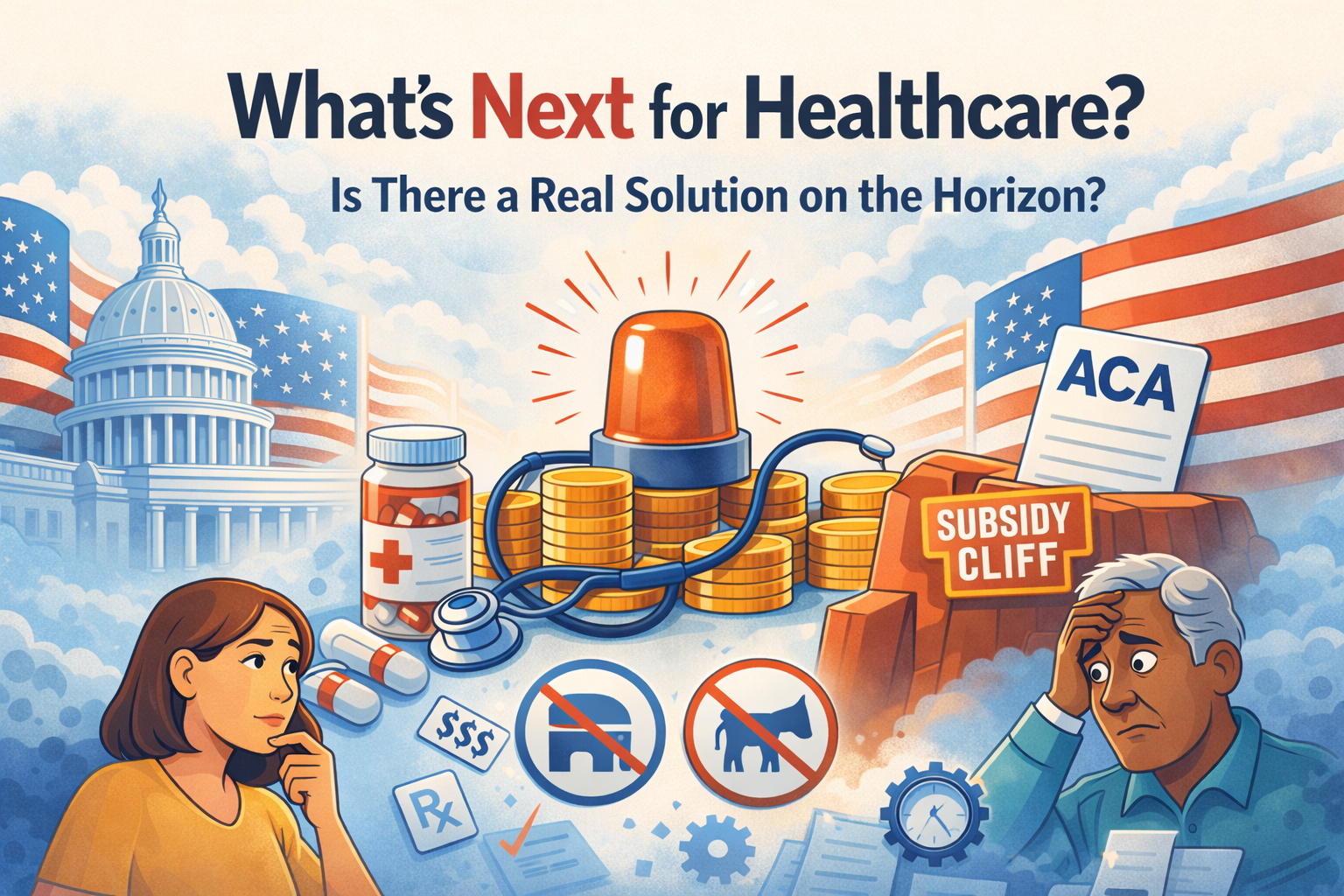(John Nelson, Jr, former NAHU President, sheres his thoughs)
Here are some random thoughts about the individual and small group markets, and what might happen to them during the next couple of years. They are predicated on the possibility that the
outcome of the national election yields roughly the same political dynamic in Washington DC with the House controlled by Republicans, a bare majority of one party
or another in the Senate and the President is reelected.
One of the primary concerns I have about the Affordable Care Act is its impact on the individual market. It will take a market that is fully underwritten with age bands of more than 5:1 to a new world where there is no more medical underwriting, insurers are required to take everyone, cover pre-existing conditions right away and limit age bands to a ratio of 3:1. All individuals will have to get coverage or pay a nominal tax (remember, it used to be called a penalty before the Supreme Court said it was a tax) if and when they change their minds. On top of all this, those carriers who sell individual health policies must do so while sustaining a minimum medical loss ratio of 80%.
So this is what the new world of individual health insurance is supposed to look like according to the ACA. No one will be out of insurance, insurance companies can’t overly profit from this block of business and older people won’t have to pay more than three times the premium a younger person pays. A guarantee issue marketplace where no one is turned down, insurers get tens of millions more people to insure and they can’t unduly profit from the overall system. Sounds like nirvana, huh?
Not quite.
The problem with this scheme is that millions more folks will be coming on board a system that is already overburdened with all kinds of pressures. Given that it has had similar reforms in place for years, Massachusetts is a precursor to what we all might be seeing past 2014; the uninsured population has gone down but lines have gotten longer in waiting rooms. And, the number of primary care doctors is struggling to meet the demand for services from the newly insured while insurance rates there continue to rise.
Some folks whom I respect on the carrier side have told me that we’re likely going to see individual rates increase by at least 50% in order to meet ACA-related provisions. It’s not hard to understand why. As mentioned above, medical underwriting will cease to exist and insurance companies will be limited in terms of how they rate folks. The only factors they can take into account when it comes to pricing are the geographic location and age of the insured. Yes, they can rate up for smoking but that’s it. Rates for 20 year-olds will definitely go up because insurers are not going to have an appetite to overly reduce rates on 50 and 60-year-old folks who typically have more claims.
How will the exchange factor into any of these dynamics? The people who are charged with creating and operating exchanges have a simple and noble mission; to reduce the population of uninsureds as much as they can. They can do this by facilitating the process for determining eligibility for subsidies, enrolling people through any appropriate means (including using agents) and by providing consumers an easy to understand means to help them navigate through the complexity of choosing and getting enrolled in the plan that online casino is right for them. But beyond all this, the exchange will be facing the same dynamics that we will all be facing with the individual market and its new world-related costs. The exchange can’t do anything about guarantee issue, the 3:1 age banding and the other insurance reforms. So the products offered via the exchange are going to be subject to the same economic pressures as those products outside of the exchange. The carriers know this. The exchange knows this.
Ah, but there’s the election! I don’t think the outcome of the election is going to affect much of this. For things to dramatically change with the individual reforms and, for that matter, the entire ACA, three things would need to happen; Romney would have to win AND the republicans would have to keep a majority in the House (this is a probability) AND the republicans would have to take a majority in the Senate (The polls point to 48 republicans and 52 democrats – so far). Regardless of the outcome of the election, no one I know in Washington thinks the Republicans have any appetite for bringing back medical underwriting.
So with all this said, here’s where I think things will go with the individual market. First of all, ever since the Supreme Court called the penalty a tax, my bet is that the administration immediately undertook action to make this whole thing moot. No one
who is in office and/or running for office wants to impose another healthcare-related tax – especially in this economy. So my bet is that this will be made moot by one simple action – the creation of a special open-enrollment period via regulations – not an act of Congress. The ACA is over 2,700 pages long. Regulators whose jobs are to interpret what congress “meant” and to turn their general wishes into actions have already added thousands of pages to the bill. Some of the many pages of regulations to come will undoubtedly include an open-enrollment provision which is very similar to Medicare D. It could be as simple as, if you’re eligible for coverage, you must sign up before January 1st, 2014. If you decide not to (maybe you’re healthy and are willing to pay the tax in case you change your mind down the road) and something happens that compels you change your mind, too bad. Insurance companies will not have to take you. Period. This legislation is being seriously contemplated in Sacramento and I have little doubt that federal regulators will turn this into reality. This will help keep the rates lower than they could be.
But we still have the 3:1 age banding issue and we also have the burden on the healthcare delivery system from the millions of people getting insurance for the first time who have unaddressed care needs. I predict that somehow, relief will be given on the 3:1 issue. It could come from future legislation or just regulators giving the insurance industry another year or two to adjust and transition. But I wouldn’t be surprised to see that happen sometime in 2013.
Speaking of 2013, that is going to
be an interesting year for our industry. 2013 is serious ramp-up time for the major provisions of the ACA, but it is also a window of opportunity for Congress to pass legislation addressing some of the more onerous provisions and unintended consequences of the ACA. Nothing much has happened in 2012 because this is an election year; one that is inherently full of political posturing. 2013, on the other hand is a post-election year. Lawmakers will be less afraid to take chances and good, make-sense legislation could happen.
So I expect to see an open-enrollment period mitigate the adverse selection issue and I wouldn’t be surprised to see relief given on the 3:1 rate band. Both of these moves will help with softening the rate blow to the consumer, but the rates will still go up pretty high. Other factors for increasing rates are the benefit ceilings imposed by the feds via the ACA and the benefit floor imposed by laws and regulations here in California. As an aside, carriers are finding it difficult to create a “bronze” level plan. You remember the metallic plans right? When 2014 rolls around, all plans must fit into one of four metallic levels of benefits; bronze (60% of actuarial value), silver (70%), gold (80%) and platinum (90%). So guess what? Because of the legislative floors and ceilings, carriers are finding it very difficult to create a bronze benefit plan. Again, 2013 should be very interesting and I have hopes that a number of troubling details like this and the issues above will be addressed.



